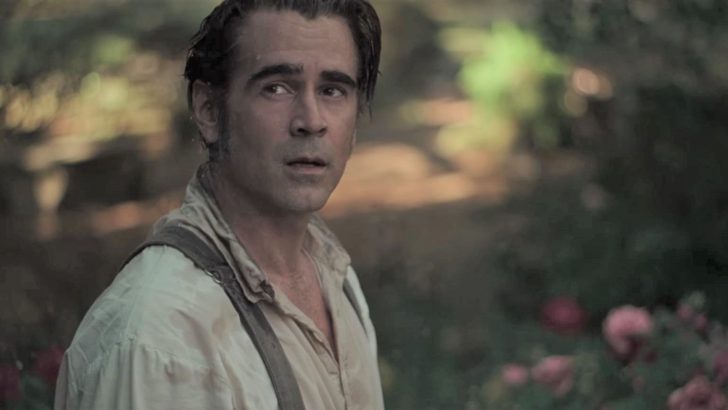Colin Farrell takes the role Clint Eastwood essayed in Don Siegel’s 1971 version of this civil war story based on Thomas Cullinan’s acclaimed novel A Painted Devil. This time Sofia Coppola directs, replacing Siegel’s misogynistic psychodrama with sensitivity and sultry elegance.
Farrell is John McBurney, an injured Yankee soldier who’s deserted his post. He’s taken into a female boarding school in a sprawling estate to recover from his wounds. Its white pillared grandiosity recalls the Tara of Gone with the Wind.
He foments rivalry and dissension between the women. They vie for his attention while he, in turn, tries to persuade them to keep him within their sanctuary. The spareness of their lives is unsettled by the presence of a male figure in their midst, a cuckoo in the secluded nest of their various forms of forlornness.
Nicole Kidman is Martha Farnsworth, the school’s headmistress. Kirsten Dunst plays Edwina, one of its teachers. Various pupils parade about the place in satins and laces as the sexual tensions mount.
In Siegel’s film the women’s loneliness was shown in broad strokes. Here it’s more nuanced, conveyed in glances and muted gestures. At times you feel you’re watching Les Liaisons Dangereuses transported to the Virginia of 1864.
Outside the candle-lit splendour of the school the war rages. Inside it inside a different kind of war goes on inside the characters’ heads. The beauty of their surroundings contrasts with their mounting frustration.
Coppola oversees the proceedings with the kind of moody expressionism we’ve come to expect from her. Some scenes are reminiscent of her earlier The Virgin Suicides in their succulence. Philippe Le Sourd uses his camera like a paintbrush. His work on fog and sun alike mesmerises us with its claustrophobic intensity.
Farrell doesn’t quite have the charisma of Eastwood as the corporal wondering if he’ll be given up to the Confederates when his leg heals. The film is more interesting for the dynamics that go on between the women, especially Martha, Edwina and the pampered student Alicia (Elle Fanning).
Repressed
Edwina is the most repressed. Martha has a tad more discipline despite having lost her husband in the war.
A sub-Freudian battle of the sexes plays itself out. Will the women turn from McBurney’s protectors to his nemeses?
Most remakes these days ramp up the energy of the films they’re adapting. How refreshing it is to finally see one that plays the original down, replacing male machismo with female intuition.
Clark Gable arranged to have the so-called ‘women’s director’ George Cukor removed from the set of Gone with the Wind in 1939 because, he claimed, Cukor was ‘throwing’ the film to his co-star Vivien Leigh. He was eventually replaced with Gable’s friend Victor Fleming, a ‘man’s man.’
It would be interesting to see what Ms Coppola would make of this chauvinistic film if she re-made it today. Would Scarlett O’Hara get the famous “frankly my dear” line instead of Rhett Butler?


 Aubrey Malone
Aubrey Malone Colin Farrell in The Beguiled
Colin Farrell in The Beguiled